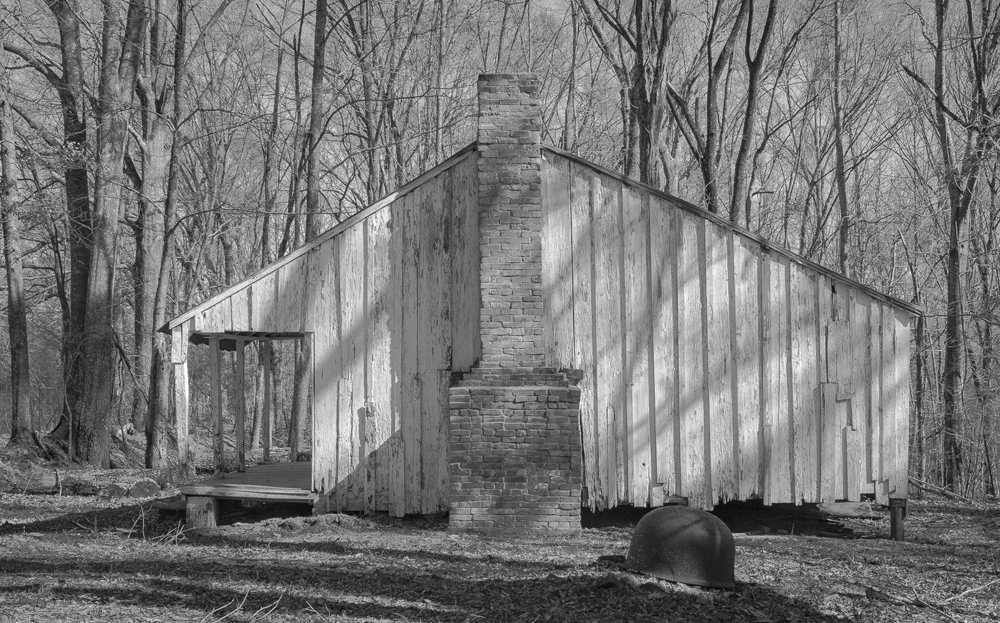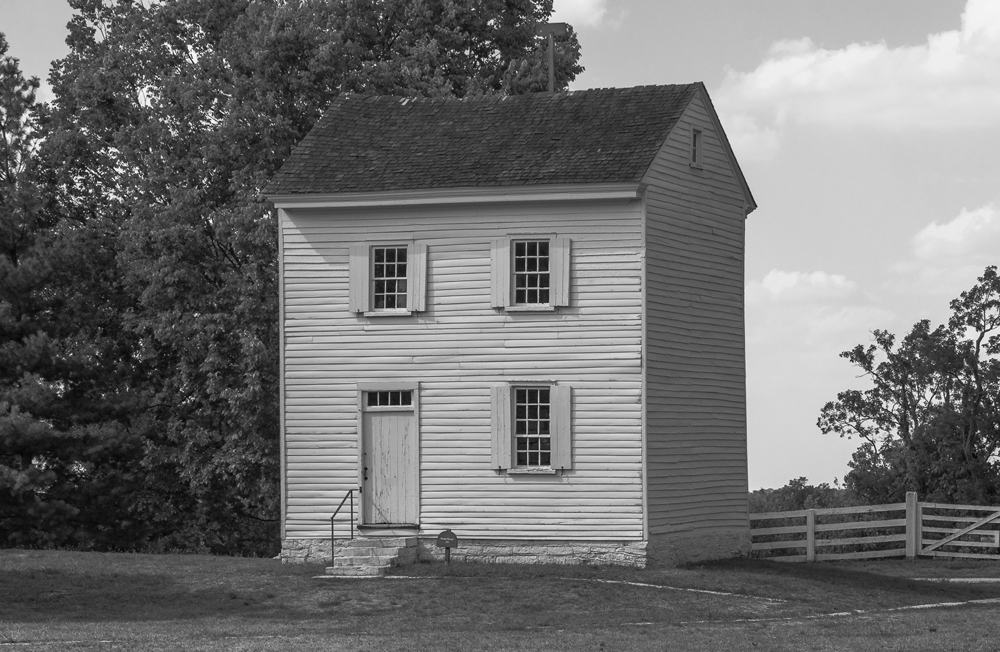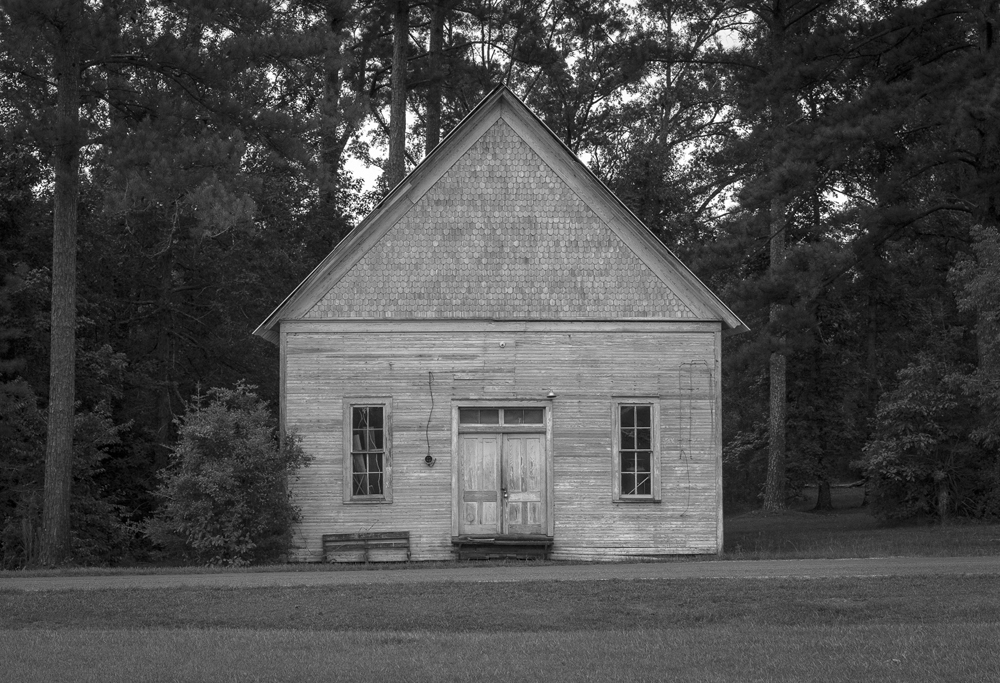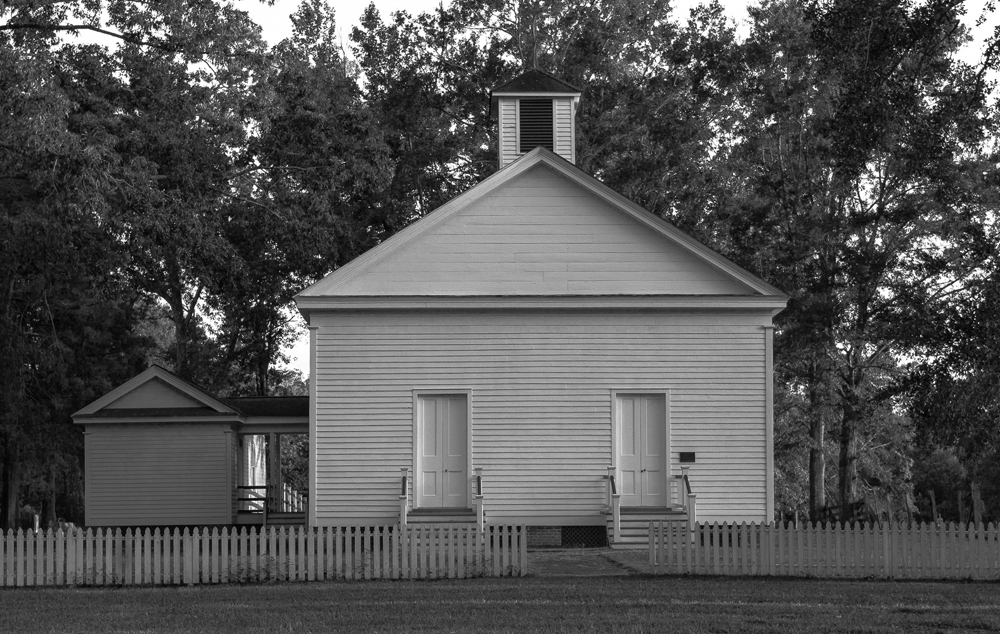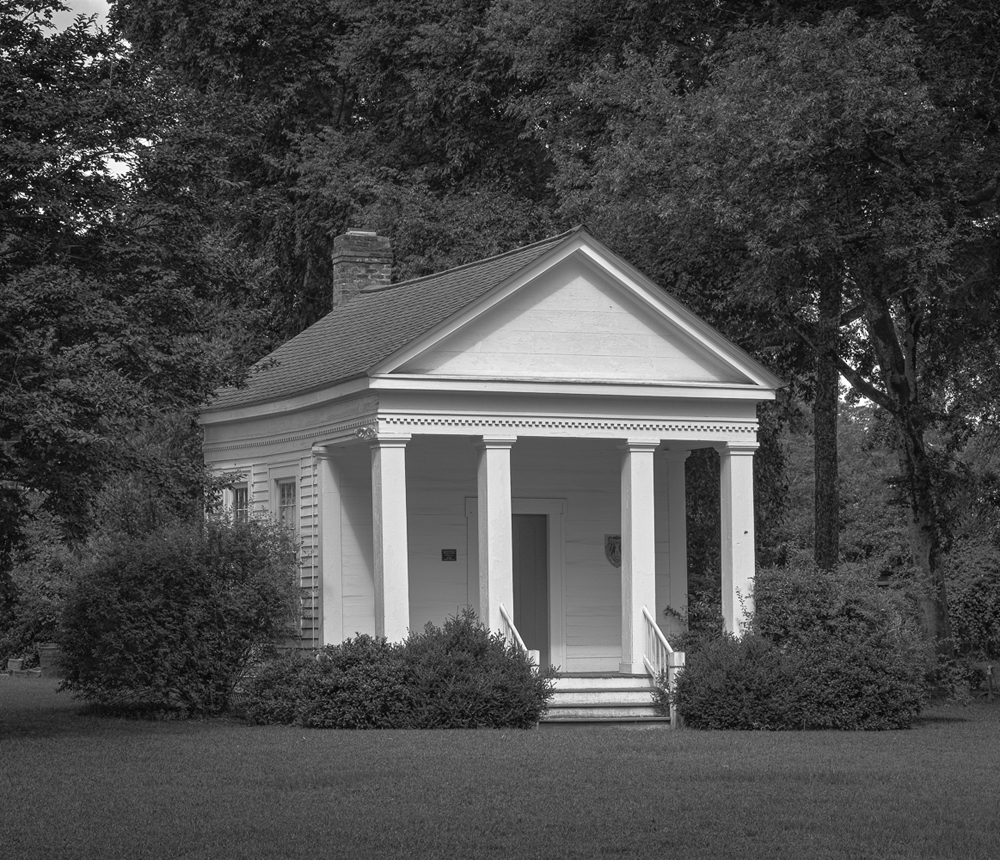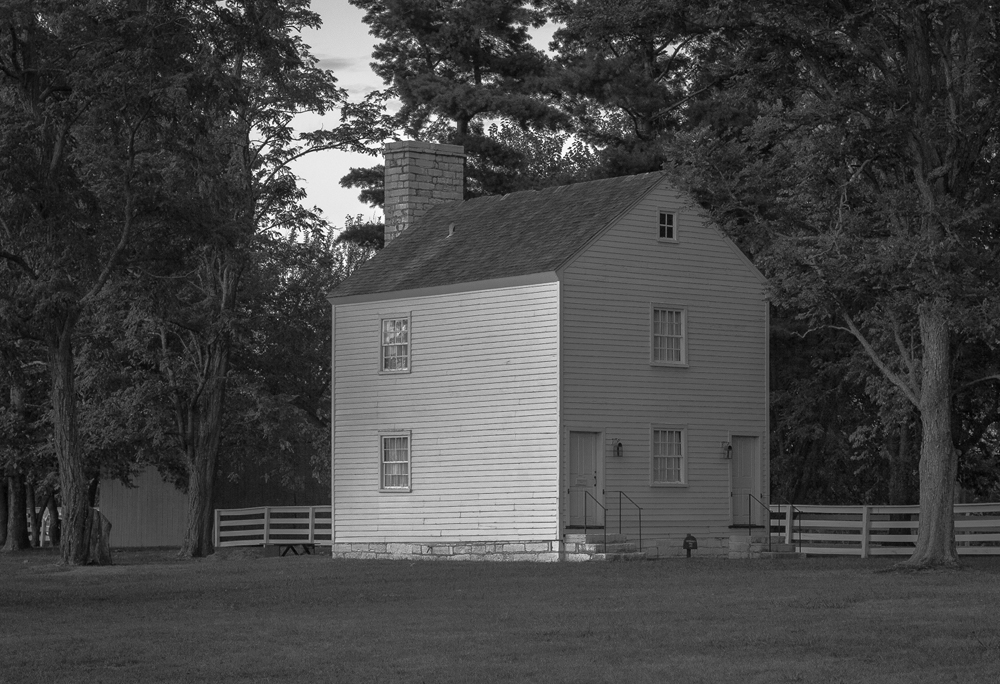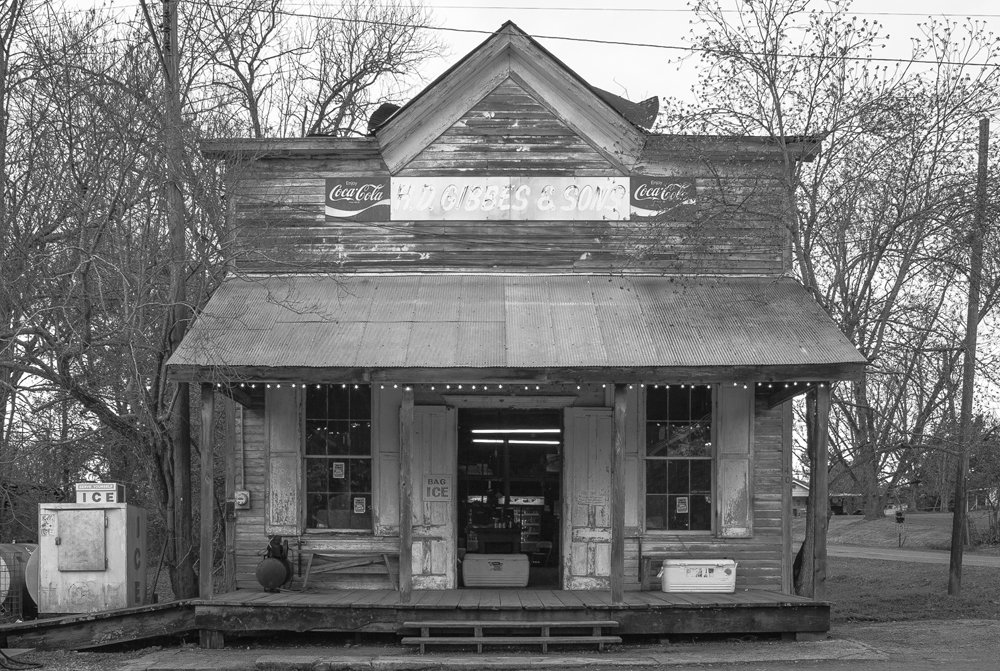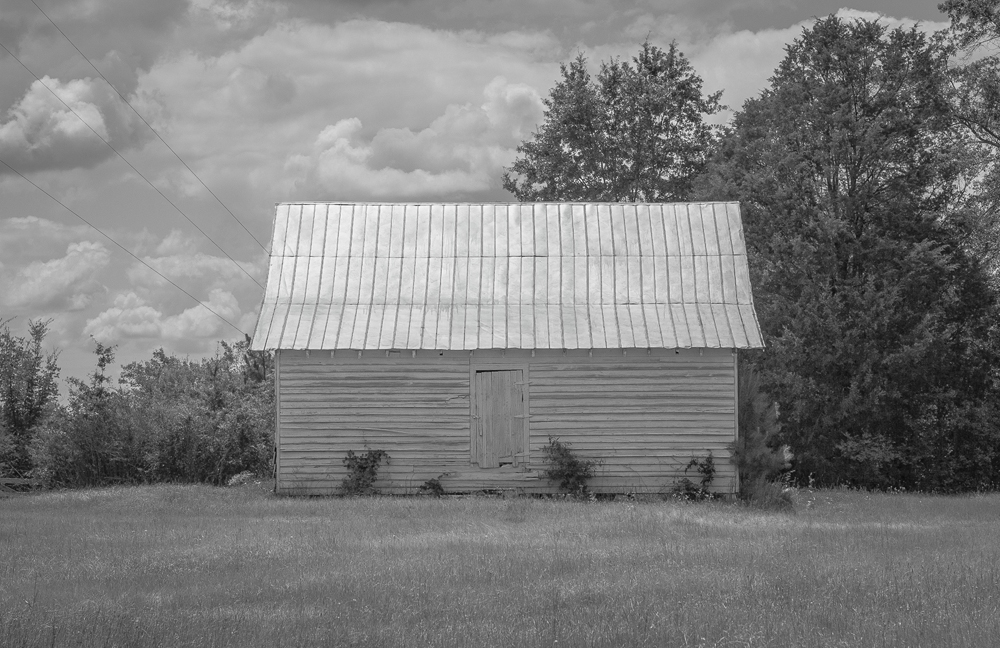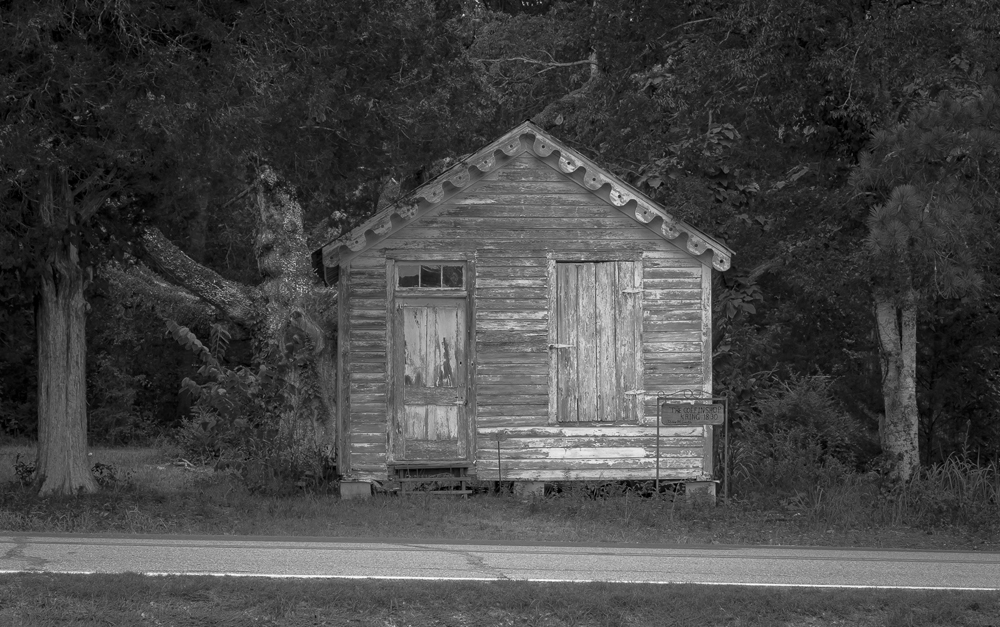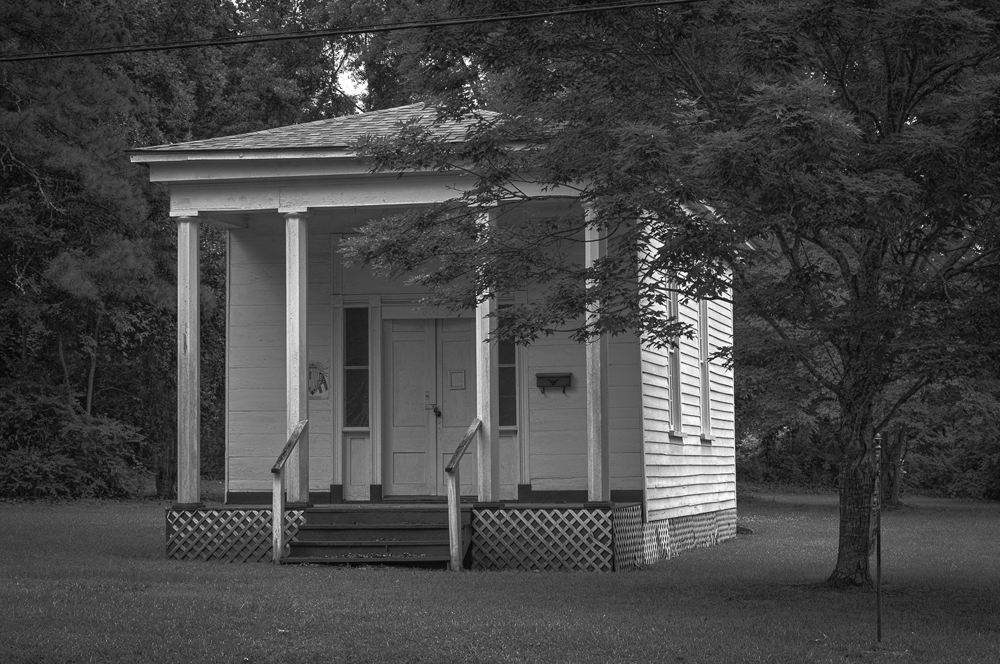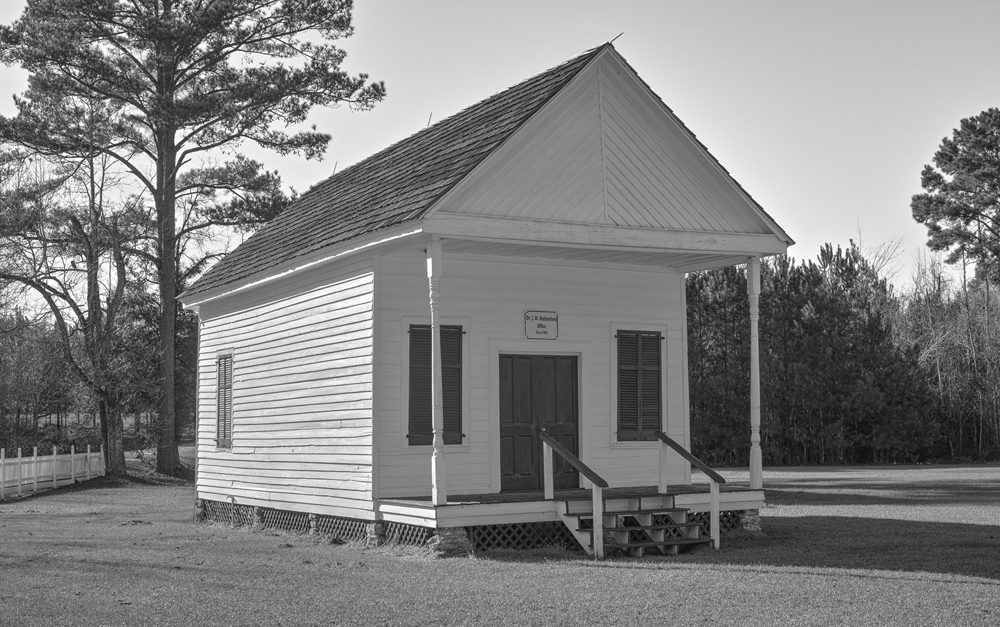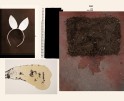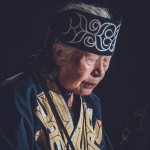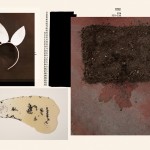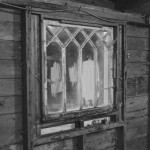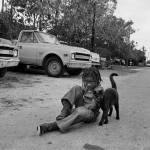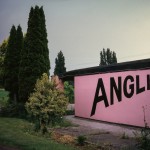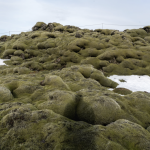Don Norris: The States Project: Mississippi
Don Norris is my coffee buddy in Hattiesburg, where we both live. It’s fun to get together and share what is happening photography-wise in the South. I first saw his Southern Vernacular photographs at Oddfellows Gallery in 2013. I was particularly drawn to the photo of the Newbern Presbyterian Church (1848) with its strong, symmetrical, and simple lines. The white wood-framed structure, with two doors, emerges like a ghost from a canyon of dark trees. It looks very well cared for, and I wondered what was it’s history. Who attended this place of worship? Did they share the characteristics embodied in the architecture? Why were there two doors?
Don has spent a lot of time finding these surviving pre-Civil War buildings and carefully documenting them so we can appreciate them even if we can’t drive the back roads to see them ourselves.
Don is also a collector and financial supporter of photography. All of these are great attributes for a photographer who, like his work, is forthright, a respecter of the simple life, and generous.
Don Norris is a native of northwestern Indiana. He earned degrees from Indiana State University (BS) and Tulane University (MS, Ph.D.), all in the biological sciences. He is an emeritus professor of biological sciences at the University of Southern Mississippi in Hattiesburg.
As a photographer of landscapes, he is interested in the everyday. His images are clean and specific. His portfolios center on the South and are about visual elements that undergird this region’s strong sense of place: its vernacular architecture, its broad landscapes, and its small commonplaces.
His photographs have been exhibited widely in the Deep South. They have won several awards. They are part of collections of the Ogden Museum of Southern Art, the Mississippi Museum of Art, the Montgomery Museum of Fine Arts, the Jule Collins Smith Museum of Fine Art at Auburn University, the Art Museum of the University of Kentucky, and the Do Good Fund Initiative for Southern Photography.
Southern Vernacular
Southern Vernacular presents a series of American buildings that are related in several ways: all are historic, southern, vernacular, and rural. Each is a distinctive architectural marker in the long life of its community, where it is seen as a necessary part, has a name, is cared for, and is a strand in the weave of local history.
Most of these buildings were constructed before the Civil War, during a time of exuberant American self-definition, especially through its architecture. The beliefs and values of any period are often reflected in its buildings, and with these we find an architecture voicing some ideals of the antebellum South. A general statement of these expressions might be this: forthrightness, tempered by austerity, simplicity, and formality. These qualities are most evident in the Protestant meetinghouses, the iconic churches of their day, and in the Shaker constructions, but they define the series as a whole.
This kind of historic vernacular architecture is relatively common in the Deep South, where original buildings have persisted (some churches have been in continuous use) and where the designs were used locally on into the 20th century. Whatever their times and places, these buildings are arresting. When we chance upon one, perhaps as we round a curve on a red dirt road, we immediately perceive a quiet integrity and a dignity that obviously are not of our time.

©Don Norris, Lebanon Presbyterian (1854), Hinds County, Mississippi
Posts on Lenscratch may not be reproduced without the permission of the Lenscratch staff and the photographer.
Recommended
-
Shinichiro Nagasawa: The Bonin IslandersApril 2nd, 2024
-
The International Women in Photo Association Awards: Lorraine Turci: The Resilience of the CrowMarch 16th, 2024
-
The International Women in Photo Association Awards: Rayito Flores Pelcastre: Chirping of CricketsMarch 14th, 2024
-
The International Women in Photo Association Awards: Louise Amelie: What Does Migration Mean for those who Stay BehindMarch 12th, 2024
-
Brandon Tauszik: Fifteen VaultsMarch 3rd, 2024



